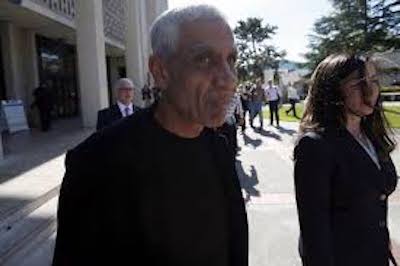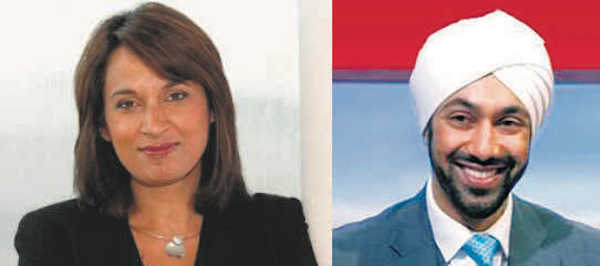
Over the last seven decades, the Indian economy has seen several ups and downs. The country has gone from having a GDP of just Rs 2.7 lakh crore at the time of Independence to Rs 272.41 lakh crore. Once branded a “third world country”, India is now among the biggest economies of the world. India’s economic history has been marked by several critical milestones amongst which are the crisis years of 1966, 1981 and 1991, and India’s emergence from the economic crisis as the world’s fastest growing major economy.
Currently, India is the world’s fifth-largest economy, behind Germany, Japan, China and the U.S.
Pre-liberalisation socialist economy
India’s economic policy after independence was influenced by the colonial experience. Independent India’s first Prime Minister Jawaharlal Nehru expected the nation’s growth to flourish as an outcome from the strategy that involved rapid development of heavy industry by both public and private sectors. The Industrial Policy Resolution of 1948 proposed a mixed economy. Earlier, the Bombay Plan, proposed by eight influential industrialists including JRD Tata and GD Birla, envisaged a substantial public sector with state interventions and regulations to protect indigenous industries.
Planning Commission, rapid industrialisation in the 50s
India set up the Planning Commission in 1950 in order to oversee the entire range of planning, including resource allocation, implementation and appraisal of five-year plans. The five-year plans were centralised economic and social growth programmes modelled after those prevalent in the United Socialist Soviet Republic (USSR) at that time. The first five-year plan, launched in 1951, focused on agriculture and irrigation to boost farm output as India was losing foreign reserves on foodgrain imports. The second five-year plan launched in 1956 laid the foundation for economic modernization to better serve India’s long-term growth imperatives. It advocated rapid industrialization with a focus on heavy industries and capital goods.
Nationalisation
From 50s to 91, several industries, companies were nationalised by the government. Under the Air Corporations Act that came into force on 28 May 1953, Parliament voted to nationalise nine airlines—Air India, Air Services of India, Airways (India), Bharat Airways, Deccan Airways, Himalayan Aviation, Indian National Airways, Kalinga Airlines, and the Air India International —and replaced them with Indian Airlines and Air India International. The political success of this single Act captured and consolidated the government’s attitude towards the private sector and set the pace for the nationalisation of several other sectors, notably banking, life insurance, general insurance and mining. The next prominent nationalisation happened in 1969 when Indira Gandhi announced nationalisation of 14 leading banks late on July 19. The move was aimed to encourage businesses in order to serve better the needs of the country’s economy.
Free India’s first big financial scam
In 1957, Mundhra scandal, independent India’s first big financial scam, was raised by Feroze Gandhi – Indira Gandhi’s husband. He had found evidence that Life Insurance Corporation (LIC) had bought fraudulent stock worth Rs 1.24 crore in six companies owned by Kolkata-based Haridas Mundhra, without mandatory consultation with its investment committee. It led to the resignation of then finance minister T T Krishnamachari.
Crisis after Nehru; Green, White Revolution to the rescue
The quest to quickly industrialise the nation caused a large reallocation of funds away from the farm sector. As a result, food shortages worsened, and inflation spiked in the country. In 1964, Lal Bahadur Shastri became India’s Prime Minister after Nehru’s demise. Besides the already persisting inflation, food shortages, the war with China had exposed more of India’s economic weakness. Shastri thought that India needed to move away from centralised planning and price controls and he renewed focus on agriculture.
Shastri’s focus on food security arose from the fact that in the 1960s, India was on the verge of a mass famine, and food aid imports from the US were beginning to hit India’s foreign policy autonomy. This led to geneticist MS Swaminathan, along with Norman Borlaug and other scientists, stepping in with high-yield variety seeds of wheat, setting off what is now known as the Green Revolution. Following the success of the Green Revolution, Shastri turned his attention to KDCMPUL – now Amul – union to expand its work, ushering in the White Revolution.
Famine, Wars leave economy crippled in mid-60s, Rupee devalued
The 1960s was a decade of multiple economic and political challenges for India. While the wars with neighbours China and Pakistan caused economic and social hardships for the masses, the deaths of Nehru and Shastri in quick succession had caused political instability. In 1966, the country was in a dire situation as the wars had left the economy severely weakened and the vital monsoon rains had also failed, worsening food shortages and causing a sharp spike in inflation. The constant need to import food grains or seek foreign aid also posed a serious risk to India’s political economy. Indira Gandhi piloted a number of policies in an attempt to trigger economic growth. In an attempt to come out of the crisis, Indira Gandhi on 6 June 1966 devalued the Indian rupee from Rs 4.76 to Rs 7.50 to a dollar in one swoop.
Liberalisation
In 1991, the collapse of the Soviet Union, which was India’s major trading partner, and the Gulf War, which caused a spike in oil prices, resulted in a major balance-of-payments crisis for India, which found itself facing the prospect of defaulting on its loans. India had asked for a $1.8 billion bailout loan from the International Monetary Fund (IMF), which demanded de-regulation in return. In response, the Narasimha Rao government, including then Finance Minister Manmohan Singh, initiated economic reforms in 1991. These reforms aimed to liberalise the economy by doing away with the Licence Raj. They also reduced tariffs and interest rates and ended many public monopolies, allowing automatic approval of foreign direct investment in many sectors.
2008 Stimulus tap to escape the great recession
In 2008, when it became clear that India would not emerge unscathed from the cascading impact of the Lehman collapse, the government announced three stimulus packages in the space of three months between December 2008 and February 2009, totalling Rs 1,86,000 crore or 3.5% of the GDP. India’s fiscal deficit touched 6% of the GDP in 2008-09, from being just 2.7% in the previous year. Over seven months between October 2008 and April 2009, the RBI eased monetary conditions dramatically and the government continued with the stimulus in 2009-10 too which led to fiscal deficit touching 6.4% of the GDP. The economy staged an impressive rebound. However, the government failed to close the tap and the fiscal stimulus was never withdrawn. To this day, India’s fiscal deficit continues to hover around 6% of the GDP.
GST, Demonisation
Two of the most talked about economic events in the 21st century are Demonetisation and Good & Services Tax (GST). On November 8, 2016, Prime Minister Narendra Modi appeared on national television and said all Rs 500, Rs 1,000 high value notes will turn invalid by midnight. The move was aimed at flushing out black money hidden from the taxman. This announcement led to nearly 86 percent of the currency in circulation becoming invalid by midnight. Close on its heels, the GST regime was introduced in 2017.
After the GST Council approved The CGST Bill 2017, The IGST Bill 2017, The UTGST Bill 2017, The Compensation Bill 2017, these bills were passed by the Lok Sabha on 29 March 2017 and Rajya Sabha on 6 April 2017 and were then enacted as Acts on 12 April 2017. Thereafter, State Legislatures of different states passed respective State Goods and Services Tax Bills. After the enactment of various GST laws, GST was launched all over India with effect from 1 July 2017.





Be the first to comment